66 The fifth recorded perihelion passage of Halley’s Comet. The reference is from the Talmud to “a star which appears once in seventy years that makes the captains of the ships err.”
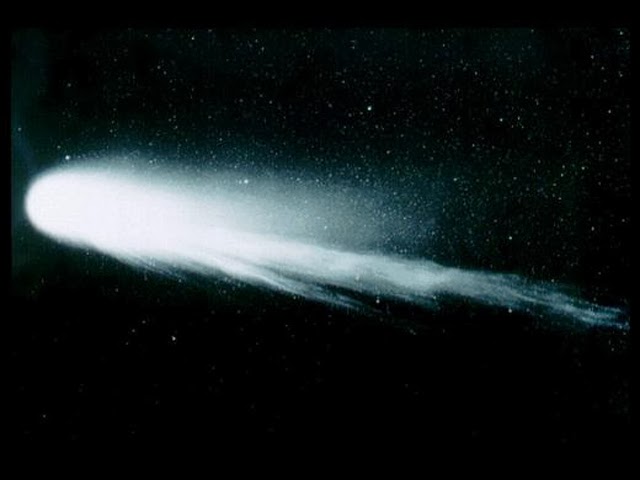
1500 Spaniard Vicente Yáñez Pinzón becomes the first European to set foot in Brazil. He had earlier sailed with Columbus to the West Indies. However, Spain made no claim to the area, leaving it to the Portuguese by treaty.
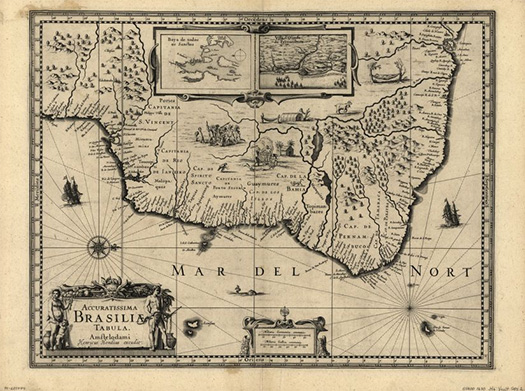
1788 Today is Australia Day, commemorating the arrival of the First Fleet at Port Jackson, New South Wales. To see ‘Babakiueria’ is to understand much.

1808 Governor William Bligh was overthrown in the “Rum Rebellion.” It had little or nothing to do with rum though there was plenty of it about. In my early antipodean days I read H. V. Evatt, ‘Rum Rebellion: A Study of the Overthrow of Governor Bligh by John MacArthur and The New South Wales Corps (1943), which found all the parties at fault. There was plenty of that to go around, too.
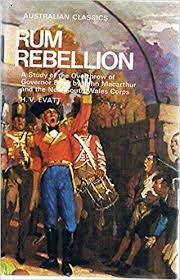
1918 Herbert Hoover, US Food Administrator, called for “wheatless” and “meatless” days for the war effort. We were mightily impressed by Herbert Everywhere when we visited his presidential library in Iowa, which includes his boyhood home as shown below. Hoover is discussed on several posts on this blog. He was a whirlwind and a humanitarian who admired Democratic President Woodrow Wilson.

‘The Nobel Prize’ (2001) by Burton Feldman.
GoodReads meta-data is 489 pages, rated 3.3 by 43 litizens
Genre: Non-Fiction

Verdict: Journalism.
N.B. I listened to it in an Audible reading. On that more later.
‘The Nobel Prize.’ Words that command respect far and wide. There are many prizes in many fields, then there is the Nobel Prize. Its origin and history is as interesting as its many recipients. More than 700 Nobel Prizes have been awarded since 1901.
Father Nobel was a Russian tinker, mechanic, and inventor who moved west, first to Finland, and then to Sweden. He took the name ‘Nobel’ in reference to the village in Russia from which he came. Father moved around a lot and experimented with explosives, which made him unpopular with many a landlord.
Alfred (1833 -1896) learned technical skills from his father, and he also learned the relevance of different jurisdictions for patents and copyrights. His two brothers went back to Russia and made enormous fortunes in oil. They were styled the Russian Rockefellers until the Reds came.
Alfred followed in his father’s footsteps literally and figuratively. He experimented with explosives and he traveled to and fro in Western Europe. He was polyglot from an early age, starting with Swedish and Russian, and later French and English.
His breakthrough was to control nitroglycerin which had been developed a generation before but had proven too volatile to be used. By trial and [kaboom] error he learned to soak it into a substance like sawdust and pack it into sticks. There followed the detonator.
He was careful to copyright and patent everything in every jurisdiction. He set up factories to produce his wares which far exceeded gunpowder in both explosive power and the capacity to be controlled in small doses. Typically he worked with local partners and was often content with the return from the intellectual property and a minority interest of 25-40%. He left management to these others.
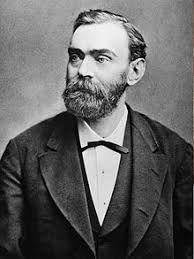
Without TNT, let’s call it for short, the Suez Canal, the Brenner Pass, the Panama Canal, the great excavations for city subways might not have been possible. Nor would mining have unleashed copper, iron, and minerals as readily.
A given quantity of TNT had twenty times the explosive power of a like amount of gunpowder and it was also quickly converted into a weapon of war, and even in his lifetime Nobel was denounced as a merchant of death. That bothered and bedevilled him.
Nobel moved around, though he spent most of his time in France and seldom returned to Sweden after nine years of age. He never married and there is little hint of romance, sex, or marriage. He had a touch of the gloomy manner of a Swedish stereotype and became preoccupied with his will at a relatively young age.
In the last three drafts of his will he proposed prizes to recognize, honour, and reward those who had recently benefited idealistically humanity. Each of those adjectives became the subject of interpretation He added and subtracted prizes over the drafts.
The Peace Prize came late and is attributed to the influence of a woman friend. The terms ‘Peace’ came into being later. He referred to it as a prize to someone who done the most to avert and eliminate war.
The will named executors whom he had not consulted and who barely knew him. They were surprised and bewildered by the task. The will made no allowance for the expenses necessary to set up and establish the prizes funded by the interest from the bequest. Moreover, the will was disputed.
Distant relatives — cousins, nieces, nephews — all challenged the will. Nobel had written his will out in a letter without consulting a lawyer and so it was vague and devoid of legal formalities which encouraged challenges.
In addition, the sum of money was so great that the Academie Française argued that Nobel was French by residence and that the bequest should be established in France to be managed by …. [go on guess].
Only when the Swedish government intervened did the matter resolve itself, some five years after Nobel’s death. Even so there was little support for the wherewithal to create a permanent organisation and the Swedish government only slowly funded that. However, by insuring that the huge Nobel fortune was invested mainly in Sweden, stimulated the government to pay the upkeep for an office, heating for the rooms, postal charges, salaries for clerks and hotel bills for experts to make selections.
Nobel had also left instructions, albeit vague, about how the money was to be invested to produce an income for the prizes, and this, too, was challenged. The sum was so great that its investment in Sweden did much to boast Sweden into industrial competition with Germany, England, and France, despite being so much smaller. Those famous Swedish industrial names were in some part seeded by Nobel funds, i.e., Asko, Bophors, Electrolux, Ericsson, Kockums, Saab, Skanska, Volvo, and others.
Managing such a fund also gave the Bank of Sweden an international profile and experience that contributed later to its role in administering the Marshall Plan, which in turn gave Sweden a disproportionate role in post World War II diplomacy; an example is Dag Hammarskjold, a one time employee of that bank and administrator in the Marshall Plan. A biography of Hammarskjold is discussed elsewhere on this blog.
The impact of the Nobel Prize on Sweden was manifold. varied, and enduring. It also put Swedish scientists in the main stream of current research, and served as an entree into world scientific establishments. While scientists in comparable countries like Norway, Spain, or Italy were ignored, the Swedes were feted, and still are.
However the author is more interested in muckraking over the choice of recipients than in these long term financial, economic, social, and political dimensions.
The first substantial chapter concerns the literature prize. This was close to Nobel’s heart for he wrote plays and poetry in English and was an avaricious reader in several languages. The author points out some of the second-rate recipients of the Nobel Prize for Literature, especially in the early years when the process was inchoate, and that giants overlooked.
But the author makes no argument that these greats could have been selected. ‘Should have,’ yes. But ‘could have?’ There is only one prize a year, and even eliminating the second-raters, there would not be enough prizes for all the those omissions recited by the author. Indeed much of the book is lists of names that seems like a telephone book when listening.
While once I made it a point to read something by Nobelist in literature, no more. To this casual observer of late the Nobel Prize in Literature invariably goes to writers I have never heard of and do not want to do so. No doubt that attitude condemns me in the eyes of some. But criteria that are implicit in some the author’s fulminating are extent and durability. And I suspect many of the recipients in the last generation will not pass either test despite the lustre of the Nobel Prize.
The author also criticises the Nobel for not comprehensively covering all the literatures in all the languages in the world. This tirade is carried on and on. This auditor began to think even unpublished works would have to be canvassed to satisfy the divine criterion the author applied.
Perhaps the world’s greatest poet, composed poems on pages, which were then kept under a rock and never read by another, let alone published. The author seems to think that omitting such works undermines the prestige of the Nobel.
I blandly used the term ‘second-raters’ above to move the discussion along but reading the comments on novels on Good Reads leads me to conclude that any ostensible second-rater would have many ardent defenders. On Good Reads I have seen some of the most inane and pathetic novels stoutly defended by self-appointed champions, some of whom can spell.
Nobel specified that the Peace Prize be given by the Norwegian parliament in the recently independent Norway. This, too, was contested. Swedes had (still have but are less vocal about it) a low opinion of those truculent Norwegians, and regarded Oslo as the Nordic equivalent of a banana republic. Efforts were made to rescind that provision but international pressure and the distractions of the rest of the bequest preoccupied the Swedes and they let the Norwegians off the hook.
The author blandly assumes that identifying great works in the sciences is easier than in literature. He repeats that comment at the end of the book but when reviewing the science prizes he notes the faked results, cronyism, blinding ambition, citation clubs, organised national efforts to corral a prize. He notes the unintended consequences of science Nobel awards in distorting research agendas, either to get a Nobel or to follow in the wake of one. On this point I wished for more.
The author certainly makes clear that Nobel Prizes have became a major industry in Stockholm. It involves many committees, institutions, institutes, translators, evaluators, nominators, assessors, advisors, diplomats, clerks, managers, administrators, tech heads, and more. The activity is continuous and involves, offices, telephones, email, computer systems, a massive archive to be made digital, postage, travel, hotels, and more. All of this is done in absolute secrecy and so there is no way to estimate the cost in a year.
Secrecy is the order of the day for Nobels and it has been kept surprisingly well. I say surprisingly because leaks are the order of most days anywhere else. I would have liked some consideration given to why the rule of secrecy has been so successful there, when it is so seldom successful say for cabinet meetings, corporate boards, and examiner’s committees. For these latter meetings the secret results are usually broadcast before the written record is completed. Casual visitors to most Western European capital cities will be told state secrets within hours. The business pages spill the beans on secret corporate board meetings every Friday it seems.
I heard nothing about the origin of the Economics prize though the author spends some time in disparaging its recipients. As a layman, it seems he knows the worth of the work involved. He would not have ventured such remarks about physiology, I suspect. By the way, when I was Associate Dean in the Faculty of Economics I received a nominating form each year. I did not do so. But that fact indicates the massive mailing done.
Likewise I missed the chapter on the Peace Prize. Ergo I can give free rein to my spleen that Al Gore got one for being an insider and Barack Obama who got one for not being George Bush. Maybe he should not get another for not being President Tiny.
After years of Nobel Watching (think Kremlin Watching) the Nobel Foundation released the archives for the first fifty years. The author has great fun trolling through those for example of idiocy which can be found. While he acknowledges the daring on the part of the Nobel officials, say in making an award to William Faulkner in 1949 when his books were out of print and he was dismissed by such arbiters of opinion as the ‘New York Times’ as a village idiot. He does not go into the details of such selections but concentrates on omissions, like that of Joseph Conrad. Yes, Conrad was a great writer equal to any Nobel Prize winner, I agree.
However to get back to the view from my high horse, I also find that the author makes few, very few references to the acceptance speeches. Yet some of these in literature are even more remarkable than the works that secured the Prize. Faulkner’s ‘De Profundis’ is diamond bright.
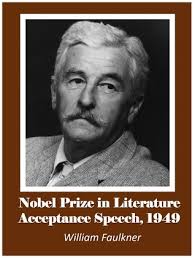
Many questioned John Steinbeck’s stature, yet his acceptance speech burns with celestial fire. That the citation written by the Committee that selected him includes some inanities hardly diminishes Steinbeck’s work, though the author makes a meal of them. My point is not that an acceptance speech justifies post hoc an award, but rather than the acceptance speeches are part of the whole process of the Nobel and have a place in its history.
Many questions remain. How many people does the Nobel Foundation employ, full or part time? What role does the Swedish diplomatic corps play in facilitating the process? These remain known unknowns. How has the process changed with chaining technology? What kind of lobbying for prizes goes on? No single work could comprehend the whole, and perhaps there are others that have considered these questions waiting for me.
Above I noted that I had not heard this or that. Listening to it while walking or at the gym means some things get by me, and perhaps that in handling the device there are skips. This is hard to check without a table to contents with chapter titles.
The reading was staccato and grew ever more irritating. The prose was continuous but the reader imposed a staccato rhythm to it that made it sound like a breathless reporter from the rooftop. That made me reluctant at times to continue. No doubt on the Audible web site, there will be fans who loved that Hemingway drill delivery. Not me.
25 January
41 I, Claudius became Roman emperor. We know the Robert Graves account.
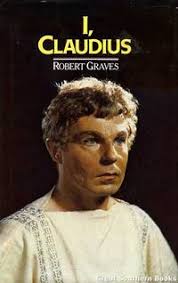
1755 Moscow University was established by Elizabeth II of Russia. Not the one in Idaho. Been by it on the tourist bus.

1858 Felix Mendelssohn’s “Wedding March” was played, at wedding of Queen Victoria’s daughter Princess Victoria, to crown prince of Prussia who became Kaiser. It had only been used once before at a wedding and when Queen Victoria chose it that made it a hit.
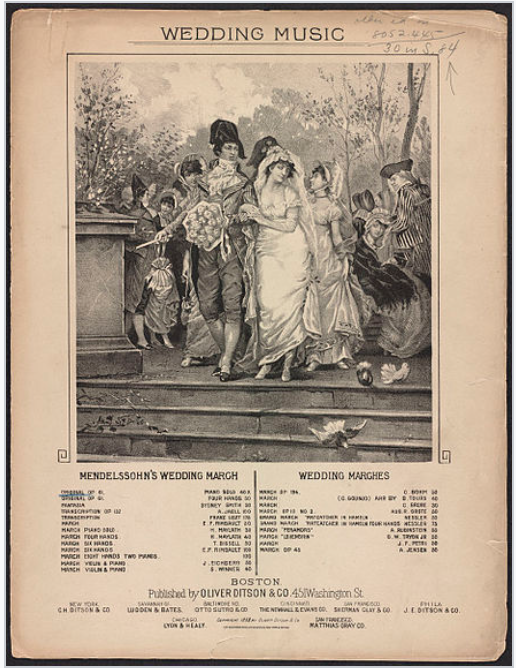
1915 Alexander Graham Bell in New York and Thomas Watson in San Francisco made a transcontinental telephone transmission.

1924 The International Week of Winter Sports (Winter Olympics) opened at Chamonix, France, at the foot of Mount Blanc. The Canadian ice hockey team wins a gold medal, The team included a fifteen year old figure skater, Cecil Smith, the first woman on a Canadian Olympic team. This was test of concept a Winter Olympiad and it was so successful that the Olympic Committee instituted it as a regular event from 1928.
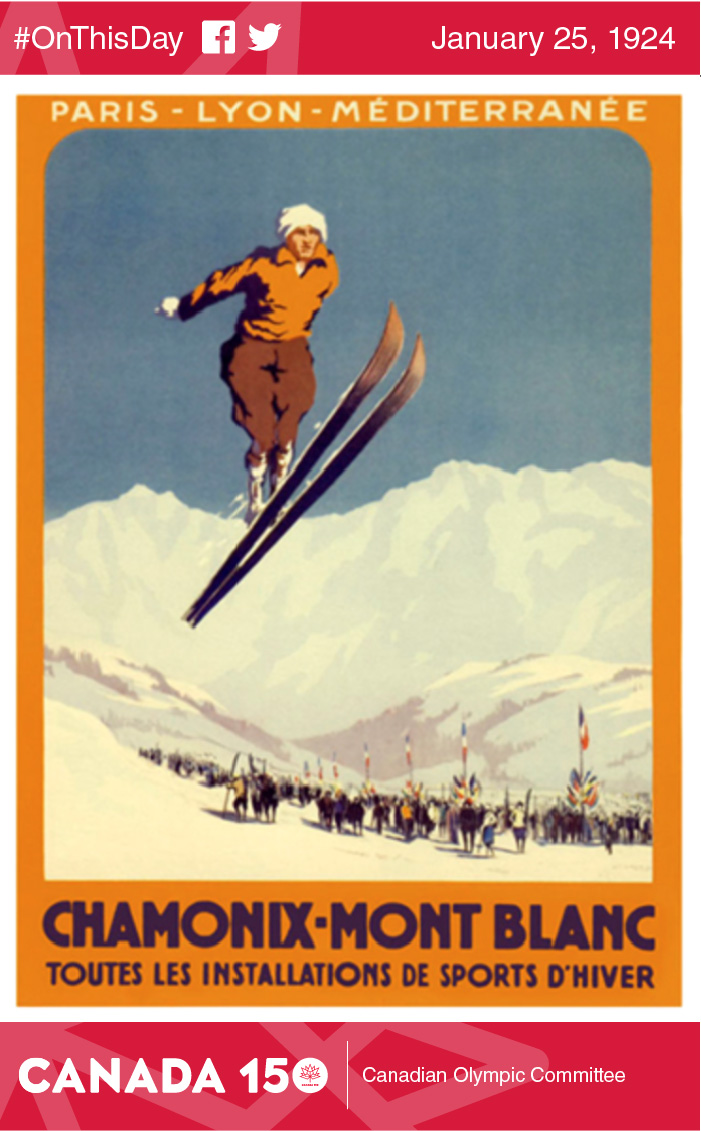
24 January
1727 Czar Peter the Great asserted the “Table of Rank” according to which a commoner could climb by service and merit to the highest positions, likewise the might could fall. The commoner probably did not know that this had been done and might opposed it. A biography of Great Peter is discussed elsewhere on this blog. Seek it out for enlightenment.
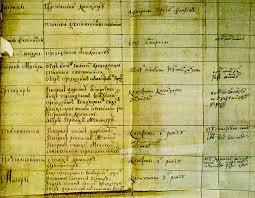
1848 James W. Marshall discovered gold on the property of Johann Sutter in California. Marshall was overseeing construction of a sawmill on the American River. The 1849 Gold Rush brought 300,000 in a few months, followed by Levi jeans, California statehood, and the gold that financed the North during the Civil War. Joe Montana came later.
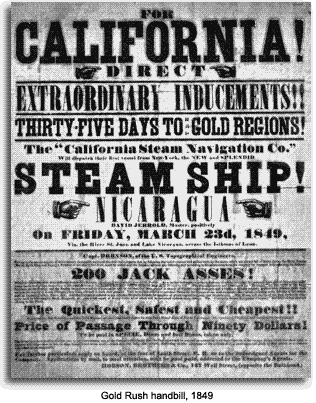
1908 Robert Baden-Powell published “Scouting for Boys” as a manual for self-instruction in outdoor skills and self-improvement. It inspired the Boy Scout movement.

1935 Canned beer was born. In partnership with the American Can Company, the Krueger Brewing Company delivered 2,000 cans of Krueger’s Finest Beer and Krueger’s Cream Ale to faithful Krueger drinkers in Richmond, Virginia. While it sold well there was much resistance from the supply chain to such a change.
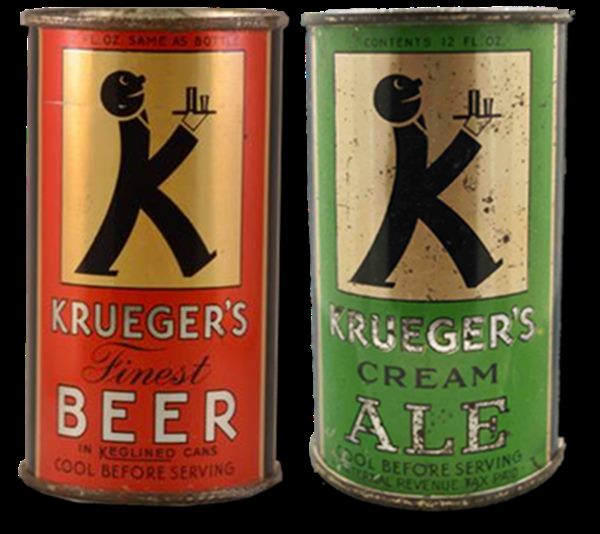
1984 Apple Computer Inc launched its revolutionary Macintosh personal computer with a mouse.

23 January
1579 Union of Utrecht signed, forming protestant Dutch Republic which became the cornerstone of the Netherlands today. I have been the hall where it was signed in Utrecht.
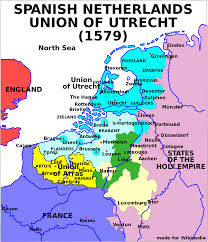
1849 Elizabeth Blackwell graduated from Geneva Medical College. She was the first woman to receive a medical degree in the United States. After years of study, she had applied to more than a dozen of medical schools but only Geneva would accept a woman.

1924 Ramsay MacDonald formed the first Labour Government when Stagey Baldwin’s Conservatives lost a vote of no confidence in the House. The Labour Party had been contesting elections for twenty-four years.
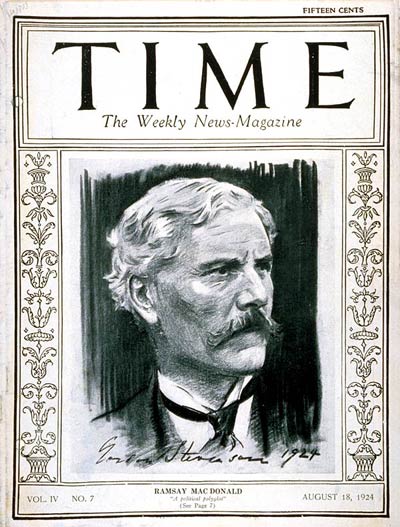
1957 Wham-O toy company produced the first batch of the Frisbees. The Frisbee pie company in Connecticut was established in 1875. Yale students used to throw its empty pie tins, yelling Frisbee as they let fly. Boola! Boola! In 1948, Walter Frederick Morrison and his partner Warren Franscioni invented a plastic version of the disc called the “Flying Saucer” and then the “Pluto Platter” and so began the Frisbee as we know it today.

1960 The bathysphere “Trieste,” crewed by Jacques Piccard and Don Walsh, reached the bottom of Challenger Deep in the Mariana Trench in the Pacific Ocean, the Earth’s deepest known point, about 11,000 meters or seven miles.

22 January
1788 History. Sydney. Captain Arthur Phillip was impressed by what he described as “the confidence and manly behaviour” of the aborigines he met at an area he then called Manly Cove. There was once a small historical marker at the parkland near Fairlight Beach where his party rowed ashore. The precise place is now private property. I used to jog along that stretch.

1840 Auckland. History. The first permanent European settlement was established in Port Nicholson on Auckland Island, New Zealand. It was initially part of the Australian colony of New South Wales. It became a separate colony in 1841 and self-governing in 1852.

1899 Politics. Melbourne. Premiers of the six Australian colonies and their advisors met to discuss unification motivated by external threats and internal tariffs. New Zealand took part in some of the early discussions. Queensland and West Australia played the reluctant virgin now and again. Alfred Deakin was one of the intellectual leaders in these discussions. A biography of Deakin is discussed elsewhere on this blog.
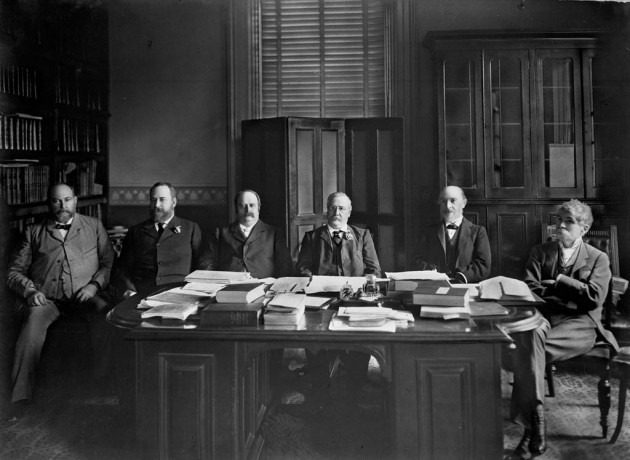
1912 Florida. Engineering. The Florida East Coast Railway extension completed 128 miles of roadway and it lasted until 1935, when it was destroyed by a hurricane. It was replaced in 1938 by the Overseas Highway, built on the foundation of the old railroad bed. It has forty-two bridges connecting the Florida Keys to the mainland, at the time it was built it was the longest over water roadway.

1973 Washington DC. Politics. In Roe Versus Wade, the US Supreme Court affirmed an earlier ruling by a vote of 7-2 that medical procedures were private and guaranteed by the Fourteenth Amendment, and explicitly applied that judgement to abortion. The nation does not belong in the doctor’s consulting room, it might be said.
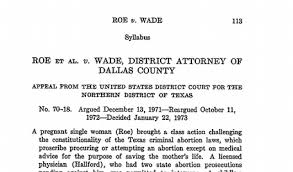
‘The Hat Box Mystery’ (1947)
IMDb meta-data 44 minutes, rated 5.3 by 74 cinematizens.
Genre: mystery, comedy
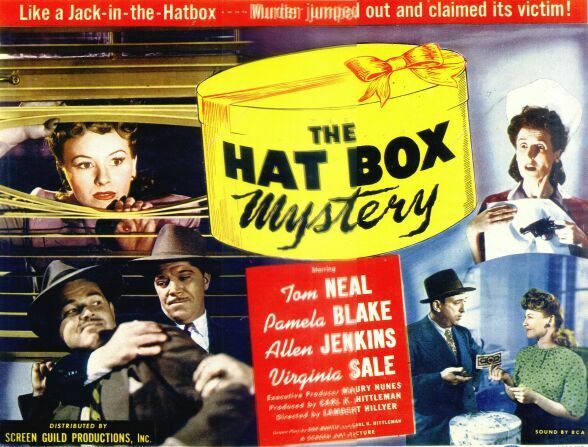
Verdict: Padded even at 44 minutes.
It opens with the characters introducing themselves to the fourth wall. Never seen that before or since.
PI Tom leaves his Squeeze in charge of the office while he does mens business. A client appears and Squeeze accepts an assignment to take a picture of a woman in a divorce case. What can go wrong?
Well, to avoid being seen with a camera it is hidden in the titular hat box. Got it?
Well get this, Squeeze does not look into the hat box but takes the client’s word for it. This client is wearing a stick-on goatee, a greasy wig, and looks like he missed the clown car. Dutifully Squeeze stakes out the target and when she appears, Squeeze deploys the hat box and discovers that within is a gun not a camera, and she really did shoot the woman. Bang! Dumb!
Tom returns to sort this out. No one noticed until the last five minutes that the gun in the hat box was Tom’s very own gat which Goatee had snitched from Squeeze’s desk while she was licking the tip of a pencil to write a receipt. Nor did anyone realise until the last five minutes that the murder bullet did — Spoiler alert! — not come from the gun in the hat box.
It gets sillier as it goes on. Yet it went on … to a sequel, ‘The Case of the Baby Sitter’ (1947).
There is an in-joke. The ubiquitous Allen Jenkins is Tom’s gofer and he is nicknamed ‘Harvard’ because he did not go to Yale. Get it? No, me neither. See below for the explanation.
Tom Neal stars as Tom. He was a privileged scion with a Harvard law degree who was better known in Hollywood for fistfights, adultery, allegations of rape, drunk-driving, and finally a murder trial. It seems someone shot his wife in the head. He served six years for manslaughter. Justice is certainly blind. However he was finally blacklisted and he disappeared from the silver screen.
When the credits start with Robert Lippert’s name, we all know it is a Filene’s Basement production.
21 January
1648 In Annapolis Maryland the first woman lawyer in the American colonies, Margaret Brent, was denied a vote the Maryland Assembly. God said woman should not vote.

1863 John Stuart returned to Adelaide. He had been determined to cross Australia from south to north and succeeded on the fifth attempt; from and to Adelaide it was a total of 3,400 kilometres. Scurvy and the sun blinded him nor could any longer ride on the return journey and was carried on a horse drawn stretcher to Adelaide. He died three years later at 51. My trips to Adelaide have been more comfortable.

1878 Cleopatra’s Needle arrived in England. That is a popular name but the obelisk pre-dates Cleopatra by millennia. Mehmet Ali, viceroy of Egypt, presented it to England in thanks for Lord Nelson’s victory at the Battle of the Nile. The transportation cost prohibited sending it to England until Sir William Wilson sponsored its transportation to London at a cost of around £10,000. On one estimate that amount today is £1,131,473.68. Engineer John Dixon designed a special iron cylinder in which the obelisk would be towed. However, the cylinder became separated from the ship towing it during a gale in the Bay of Biscay and was nearly lost. After drifting for many days, it was recovered. The obelisk arrived in Gravesend on 21 January 1878, and was erected on the Embankment on 12 September 1878. Walked by it more than once.
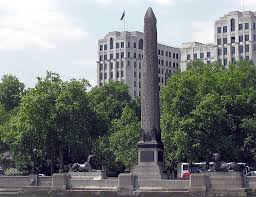
1957 Patsy Cline appeared on Arthur Godfrey’s Talent Scouts. She stole the show.

1976 The first scheduled flight of the Concordes. Two of them. One from London to Paris and one from Paris to London. Commercial flights ended in 2003. In 2004 we saw one take off at Heathrow in a cloud of smoke on its way to an air museum. Never been on one.

‘Old Flames’ (2003) by John Lawton
Good Reads meta-data is 529 pages, rated 3.9 by 759 citizens
Genre: Krimi

Verdict: Oh hum
Another in a long series of the adventures of Inspector Fredrick Troy. In it he crosses the path of Kim Philby’s network of Soviet spies in England. As always in these krimis Troy finds incompetence vying with corruption in the English policing, politics, and society. He, like Christopher Foyle, is alone virtuous. All other are fallen.
Troy continues to feel sorry for himself though the early years of the Cold War in 1956. He combines upper class snobbery with world weary ennuni. He is a man of many parts. On the one hand every short-changing newsagent sets him off on the lecture about the corruption of the British, while on the other he accepts or ignores his brother-in-law’s admission of murder, his wife’s years as a Soviet agent whose work no doubt took lives, and a traitorous old school tie. The sanctimonious Troy evidently sees no contradiction in any of this hypocrisy. There is, alas, no reason to think any of this is ironic.
There are estimates that the information Philby supplied to the KGB led to the torture and murder of about sixty individuals, and the imprisonment of more. The victims were largely anti-Soviet nationals in Central and Southern Europe. None of these events bothers Troy as much as a Special Branch officer demanding to see his ID.
In character Troy is exactly the sort of disaffected child of privilege that the Soviets recruited. This is an irony beyond the author’s ken.
The plot is intricate but it takes a millennium for it to evolve. Every page is padded with lengthy and pointless descriptions, e.g., of the cracking brickwork of a train station, or the clothes of woman. I gave up reading most of this descriptions since it did not contribute to plot or character.
It is well-written true. The plot, when it finally emerges, is neat. The characters are diverse. But…. well, it seemed like a very long short story that went nowhere for scores of chapters. I flipped through a third of it without losing the thread. Maybe more. Nor did I feel like I was missing anything.
There are discussions of other Lawton titles on this blog. Seek and find.
20 January
1616 The French explorer Samuel de Champlain arrived on the northern shores of Lake Huron opening the Great Lakes to further exploration. Champlain was a settler, navigator, cartographer, draftsman, soldier, explorer, geographer, ethnologist, diplomat, linguist, administrator, and chronicler. He made more than twenty trips from France to Canada, founded Quebec City and Ottawa and is regarded as the Father of New France. He also mapped Lake Nipissing near North Bay where I taught a term for l’Université Laurentienne.
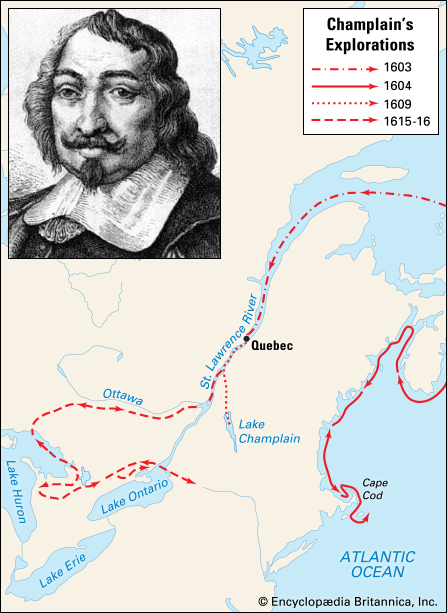
1648 The cornerstone of Amsterdam town hall was laid. It was tarted up and expanded when Napoleon made on his brothers King of the Dutch. It features in our storied Amsterdam video. A biography of the city is discussed elsewhere on this blog.
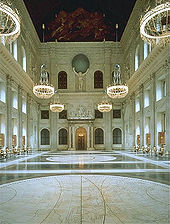
1841 At the end of the First Opium War China ceded the island of Hong Kong to the British who had invaded southern China to crush opposition to the British trade in opium from Afghanistan. Some of the opponents to the trade were Christian missionaries. We have been to Hong Kong more than once. It teems.
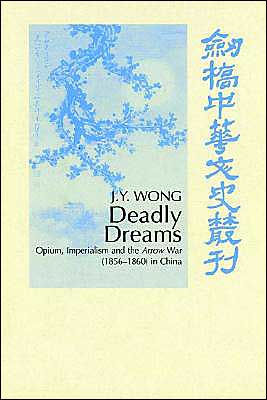
1921 Kemal Attatürk declared the Republic of Turkey with a short constitution. It emerged from the rubble of the Ottoman Empire. We visited his tomb in 2015. A biography of Attatürk is discussed elsewhere on the this blog. Though he despised all things Greek, he was a philosopher-king pace Plato.
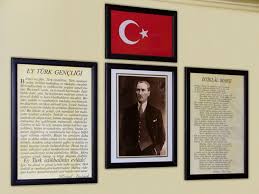
1937 FDR became the first US Presidential inaugurated on January 20 as he began a second term. Inauguration date had previously been 4 March but that date from a November election led to a long interregnum of nearly six months. The long time was to allow for Eighteenth Century modes of communication and transportation. It was changed to a closer date to reflect both technology but also the dangers of the world.

